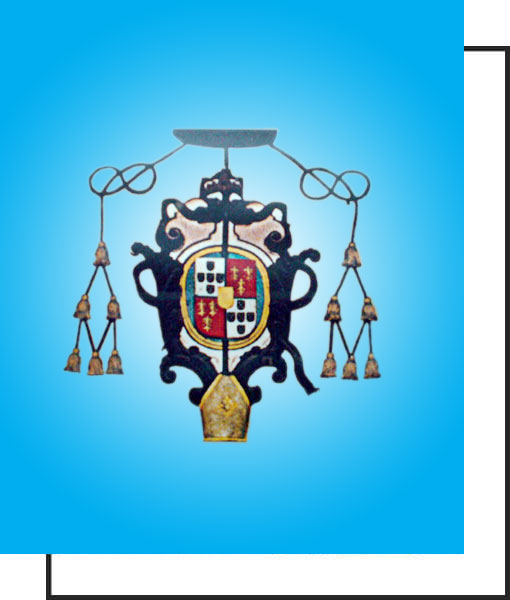

This church is known in history under various titles, namely Martha Mariam Church, SS Garvasis and Protasis church,
All Saint's Church, Synodal Church etc. A clarification may be taken from Bishop Jonas Thaliyath's Thesis. The Synod of Diamper - Roma, 1958.
We quote from the reprint in 1999 PP 189-190.
The church at Udayamperoor (Diamper) where the Synod was conducted is called Martha Mariam Church in Malayalam documents where ever the name occurs. See Vat. Ind., n.18, f.1 & 4v; Borg. Ind., n.3, f.1 & 8; Borg. Ind., n.21, f.1 & 8. But in all the other documents the church is said to be named after All Saints . See Synodo Diocesano , title page and f.4v and corresponding places in the other manuscripts. We must note here that during the Synod, Accao IX , decree 25, it was settled that the many churches in Malabar dedicated to Mar Xabro (Sabhor) and Prodh, who were popularly called Quadijakal and
that Menezes changed the name to All Saints. This information, however, is given with the narration of Menezes' official visit to Diamper after the Synod.
At present there are two churches at Udayamperoor, the Pazhaaya Palli , (old church) where the synod was conducted and the puthan palli (new church) of rather
recent origin. The church where the synod was conducted has not undergone major alternations since. The local traditions says that the church is ancient one and
that during the time of Mar Sabhor and Prodh ( suppose to be of the IX or X century), it was rebuilt by them. After their death, owing to their reputation for
sanctity their names also came to be associated with the church.
See BERNAD, St. Thomas Christians , (Malayalam) Vol.II, Mannanaam, 1921, P.51. It seems therefore,
very likely that their was another name and dedication of the church, more ancient than that of Mar Sabhor and Prodh. Actually even now, it is the statue of O.
Lady that is kept in the central niche over the main Altar flanked by two other statues, now supposed to be those of SS Garvasis and Protasis. Over and above
these there is a small niche for the statue of St. John the Baptist. Besides, on the granite cross in the church yard towards the east there is an old curved
effigy of O. Lady with the infant Jesus in her hands. The granite Cross is in all probability of pre-Portuguese origin. As for the statue, it must be remembered
that before the advent of Portuguese, there was no statues in the St. Thomas Christian churches. We can not tell definitely where the niches over the main
Altar, much less where the statues they contain, are pre-Diamperitan.
Never the less with the confirmatory evidence of the Malayalam manuscripts we can safely
conclude that during the time of the synod, the church was more popularly known as that of Martha Mariam. This might also very likely be its ancient dedication.
The change in the (secondary) dedication from Sabhor and Prodh to All Saints, as decided in the Synod and enforced by Menezes, did not become very popular.
In the recent calendars (till 1951) of the Archdioceses of Ernakulam the name of the church is given as All Saints. From then onwards we find the name of SS
Garvasis and Protasis. It is difficult to explain these changes. The presence of the two statues might have made the change from Sabhor and Prodh to
Garvasis and Protasis - There is even some similarity in the names -- easier to adopt than the change to All Saints.
(Jonas Thaliath, The Synod of Diamper, Banglore, 1999, PP 189-190)
